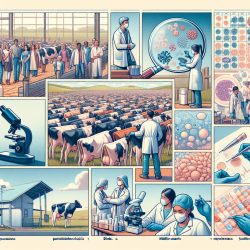Introduction
Paratuberculosis, also known as Johne's disease, is a chronic disease affecting ruminants, particularly dairy cattle, caused by Mycobacterium avium subspecies paratuberculosis (Map). Despite over a century of research, significant gaps remain in our understanding of the disease's control. This blog post draws from the findings of the research article "Progress in Paratuberculosis Control Programmes for Dairy Herds" to provide practitioners with insights and recommendations for improving control measures.
Key Findings from Recent Research
The research highlights several successful paratuberculosis control programmes worldwide, with Norway setting a prime example through its mandatory national control measures. These include restrictions on animal movements and a national surveillance programme, which have effectively eradicated Map from the country.
In Canada, provincial-level control efforts have shown varied prevalence rates, while in Germany, environmental sampling has provided insights into regional differences in herd-level prevalence. The Basque Country's long-term vaccination trials have demonstrated the potential benefits of vaccination in reducing disease impact and enhancing cattle longevity.
Recommendations for Practitioners
- Stakeholder Commitment: Long-term success in paratuberculosis control requires stable funding and stakeholder commitment. Practitioners should advocate for sustained support from government bodies and industry stakeholders.
- Enhanced Communication: Improved communication about the epidemiology of Map and its control measures is crucial. Practitioners should engage in regular discussions with farmers to tailor recommendations and enhance disease awareness.
- Surveillance and Testing: Implementing sound but easy-to-use surveillance schemes is vital. Regular testing and monitoring can help track progress and inform genetic selection for resistance to Map infection.
- Focus on Transmission Routes: Control measures should address vertical, calf-to-calf, and adult-to-adult transmission. Practitioners should emphasize biosecurity measures and risk assessments to prevent disease spread.
Encouraging Further Research
While significant progress has been made, ongoing research is essential to address existing knowledge gaps. Practitioners are encouraged to participate in research initiatives and contribute to the development of more effective control strategies.
Conclusion
Paratuberculosis control is achievable at both herd and country levels, provided that crucial prerequisites are met. By implementing the recommendations outlined above, practitioners can play a pivotal role in reducing the prevalence of Map infection and improving the overall health of dairy herds.
To read the original research paper, please follow this link: Progress in Paratuberculosis Control Programmes for Dairy Herds.










